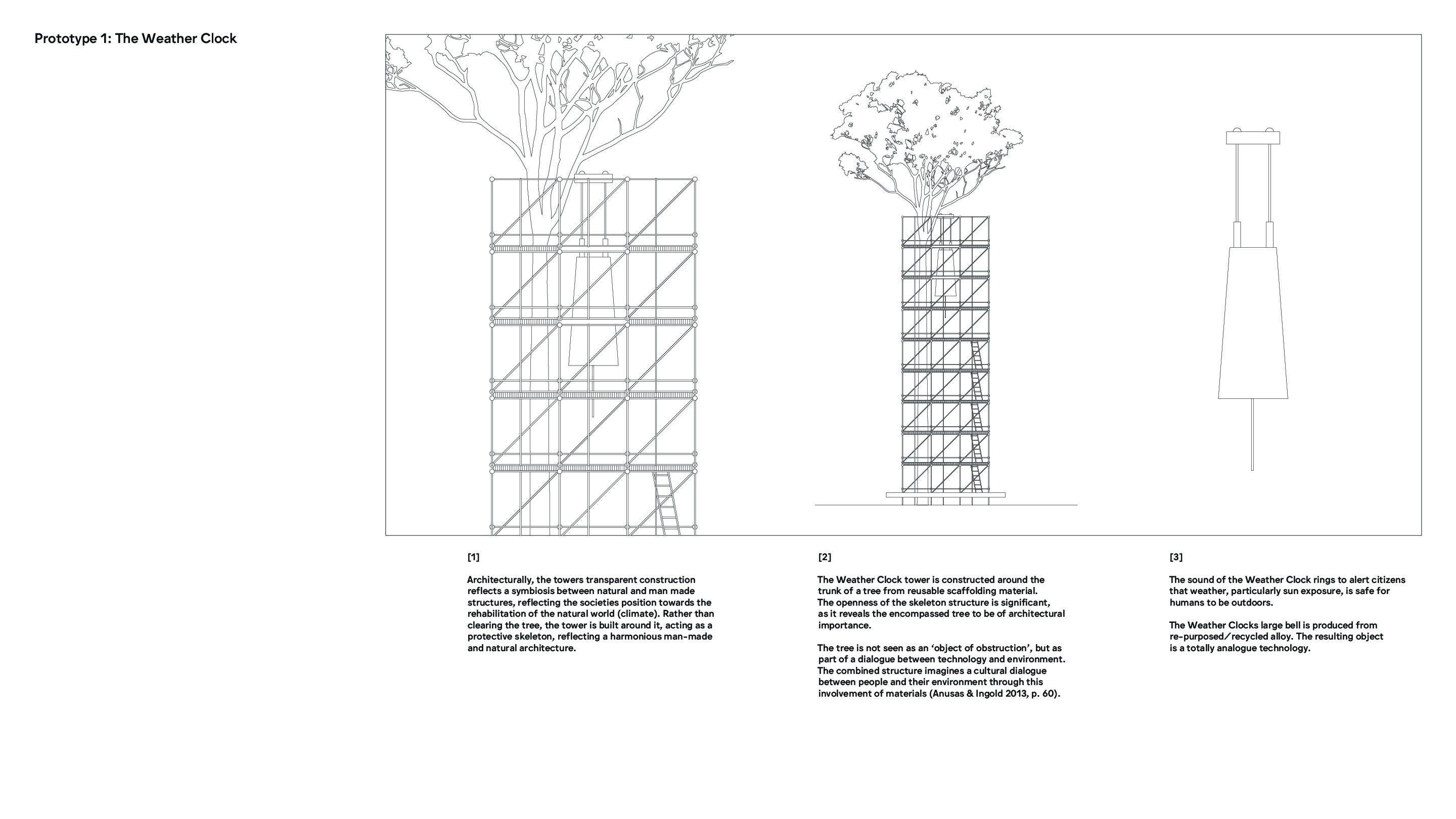The conventional, contemporary definition of ‘technology as selective novelty’ is remarkably steadfast and challenging to unlearn. The unlearning is made more challenging in the context of design briefs that in part demand originality, or newness. Hence the defining paradox with which our researchers had to wrestle in developing work for this report: how do we innovate without the innovation? How do we come up with an original idea without using the usual technological magic?
The central premise that guides the work in this report isn’t that innovation is bad and should be opposed, but rather that the conceptual framing and specific responses envisioned to improve particular situations are often limited by certain stereotypes concerning innovation in the design and use of technology. Abstinence has in this sense been as if not more important than critique. Our researchers were encouraged to avoid getting locked in antagonistic dances with poorly conceived straw men like “streamlined thinking” and “instrumental logic”, which are often crudely conceived and too conveniently dismissed in critical design, design fiction and speculative design (Dunne and Raby 2013, 60). Rather than throwing the baby (of envisioning a preferable future or framing a problem in a way to invite new knowledge) with the bathwater (of innovation-centric thinking) the work in this report aims to tread a different path. Inspired by Edgerton’s focus on polytemporality and creolisation in the history of technology, and by the indigenous design philosophy of local heroes like Julia Watson and Alison Page, many of the storyworlds showcased in this report are aspirational with regard to human futures, particularly concerning the sustainable, landscape-scale, socio-technological systems that thrived in a future past of Australia and other indigenous communities around the globe.Alternatively, in the case of storyworlds and diegetic prototypes that are less-obviously aspirational, our design researchers attempted to create ambivalent, mixed and ambiguous explorations of the tensions between macro-level socio-political changes and everyday, lived experience. Many of the design futuring approaches listed above speak about their work according to the same objectives, claiming an emphasis subtle, less extreme forms of irony and ambiguity and an emphasis on the mundane (Blythe 2016; Bleecker 2009; Dunne and Raby 2013). The evident differences in the work exhibited in this report can in part be explained as a matter of tone or style (see section 3 below) and the form the deliverables: the emphasis on exploratory (rather than just explanatory) storyboarding allowed the designers show how diegetic prototypes are enmeshed in different sets of social practices and everyday experiences; and in general the tone of the work was sincere and eccentric, rather than intensionally estranging, as is common in much of the work associated with speculative and critical design.
Four call and response diagnostics were developed in order to help the design researchers unlearn the temptations of innovation-centric conceptualisation of technology and begin to imagine and visualise different alternatives:
01
Technology has a central and dominant role in our world—Maybe try telling a story where technology is in the service of a more meaningful experience or as one ingredient in different forms of human-thing togetherness.
02
Technology has exclusively positive or negative effects in our world—try and think about a more varied range of effects.
03
A particular technology (like an app) is used predictably in the same way as it is in the present—Think more about the great variety and complexity in the way that contemporary technologies are used and the different subtle meanings associated with this use.
04
Technology is framed as a means to emancipate or liberate users from environmental influences—rather than imagine technology as means to escape from nature, begin by thinking about harmonious and disharmonious mixings of nature and technology.
These were accompanied by firmly articulated, non-prescriptive aspirational benchmarks intended to guide designers in conceiving and visualising their diegetic prototypes:
-
Imaginatively expansive, surprising multi-tier conceptualisations of human illusion systems (e.g. scientology, the modern Olympics)
- Simple but effective reframing of existing practices distinguished by a cohesive, memorable and strategically compelling vision (e.g. Parkrun)
- 'Bottom-up' approaches that creatively reconfigure and make explicit the ambient or tacit innovativeness of locally specific practices (e.g. Nurse Navigators and Whats App, see https://blogs.ucl.ac.uk/assa/2018/12/08/nurse-navigators-and-whatsapp-an-example-of-smartness-from-below/)
- Conceptual reinterpretations of common, mundane, old ‘things’ designed to fulfil different and important social needs (e.g. Cycling Without Age, Who Gives a Crap)
- Unexpected, plausibly framed, reintegrations of old and existing technology or experiences based on postulated social, environmental or political factors (e.g. revival of drive-in movies and vinyl records)
- Avoid: innovation-centric thinking where a selective technology does all the work solving a problem (e.g. gestural interface from Minority Report)
- Avoid: gimmicky, feature-led, or incremental change that doesn't connect meaningfully with a problem or a richly imagined context (e.g. Beer Guzzler Helmet)
Continue ︎︎︎
[08] National Park Neighbourhoods

[09] Green Exertion

[10] Sharing is Caring: sharing technologies in a collectivist society

[11] Resourceful Consumerism in Fostering Community Connection

